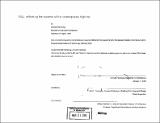TALL : rethinking the systems of the contemporary high rise
Author(s)
Namkung, Kenneth, 1977-
DownloadFull printable version (13.56Mb)
Alternative title
Rethinking the systems of the contemporary high rise
Other Contributors
Massachusetts Institute of Technology. Dept. of Architecture.
Advisor
John E. Fernandez.
Terms of use
Metadata
Show full item recordAbstract
The life of modern work is complex. What once entailed simple activities encapsulated within simple and hierarchically designed spaces has evolved into a highly volatile and complex organism. Businesses and workers are increasingly mobile, unpredictable and collaborative, requiring new types of spaces to correspond to new methods of working. While there has been much recent interest in the design of the workplace and on flexible, efficient and wired office environments, this focus has lead to the development of innovative interior systems and infrastructures that are typically inserted into rather generic architecture. This schism between complex program and simple space is most evident in the typology of the tall office building. Repetitive stacked slabs built to conservative economic programs create appallingly generic environments. In other words, the skyscraper is typically conceived as a homogenous container for heterogeneous activity. This thesis hypothesizes that the typology of the skyscraper can be redesigned to accommodate a more complex series of spaces designed around the needs of modern office culture, and that this complexity can be manifested in architectural form. This is accomplished using a multipronged research methodology. The first component is an analysis of the spatial types found in the office. The second component is a new inhabitational model that accommodates multiple occupational modes. The third component is a flexible architectural system that accommodates sectional variation and organizational change through on-site maintenance and reconstruction. The fourth component utilizes emergent technologies in architecture to rethink the skin of the office building as a dynamic and permeable object that incorporates multifunctional environmental buffer spaces. These intersecting agendas are manifested in the form of a sixty floor office tower located in midtown Manhattan. The end result of this process is not a focused research inquiry into a singular agenda but is rather" a prototype that innovates at many scales, and does so in a way that fits within economic necessities of large scale office development.
Description
Thesis (M.Arch.)--Massachusetts Institute of Technology, Dept. of Architecture, 2003. Includes bibliographical references (p. 86-87).
Date issued
2003Department
Massachusetts Institute of Technology. Department of ArchitecturePublisher
Massachusetts Institute of Technology
Keywords
Architecture.